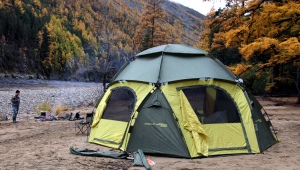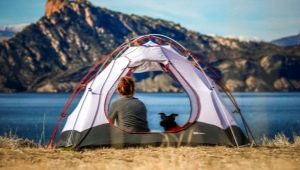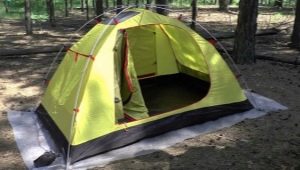Heat exchangers and heaters for tents: features, types and selection
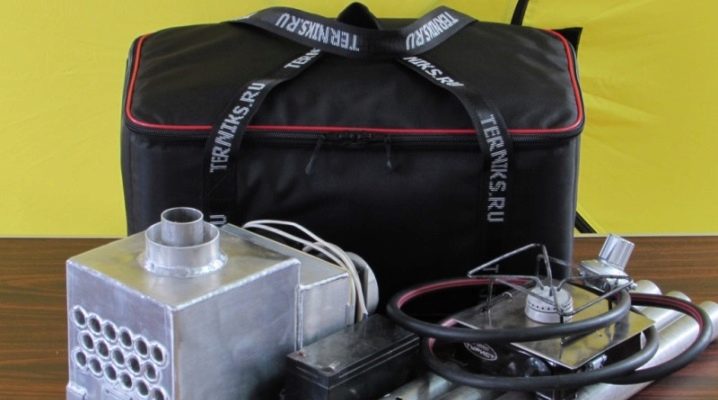
A tourist tent is a portable house in which, albeit for a short time, you want to create acceptable conditions. This is especially true in the realities of the Russian climate, when in most of the country's territory, for a significant part of the year, air temperatures do not exceed 0°C, and to be precise, they are often much lower than this generally accepted mark of extreme conditions.
It is not surprising that it was in Russia that various kinds of heaters for tents became popular.

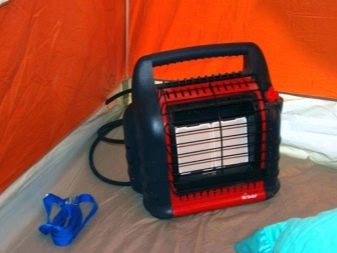
Description of devices
There are quite a few varieties of modern devices for heating tents. According to the method of heating, they can be divided into heat exchangers and heaters. Heaters are a special type of heating devices for a tent that use thermal energy generated by the combustion of any fuel.
A common feature of such devices is the presence of open fire. The work of the heat exchanger is also based on the combustion of fuel, while the heating of the tent is carried out due to the heated structural elements of the device. There is no open fire directly outside.

Varieties
A tent by itself cannot warm anyone. In the summer, the main source of heat is the people themselves inside.However, with a decrease in air temperature to 0 ° C and below, additional heating is required, otherwise the entire effect of a portable house will be reduced to protection from wind and precipitation. Years of research have led to the formation of several main lines of tent heaters. They differ in a number of features:
- type of fuel used;
- materials used for the manufacture of the structure;
- heat transfer method.
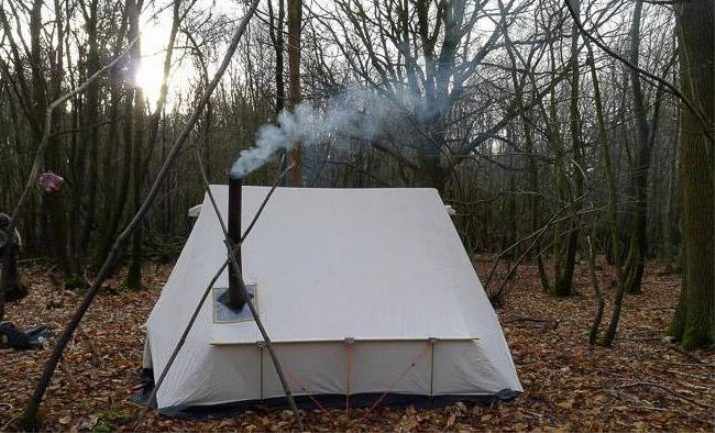
A solid fuel alcohol heater is the most budgetary, but also the most inefficient option. Due to the simplicity of the design, such a heater is often made by hand. However, it will be difficult to really heat even a small tent in winter with this heat source. Although it is possible to warm frozen hands or feet with it.
This device will do a good job with heating food, you can boil water and warm yourself with a hot drink. However, there is still no talk of full-fledged heating.
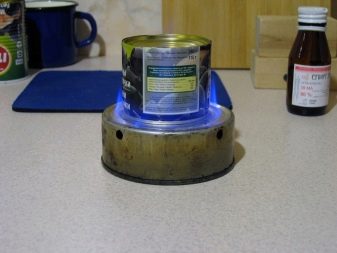
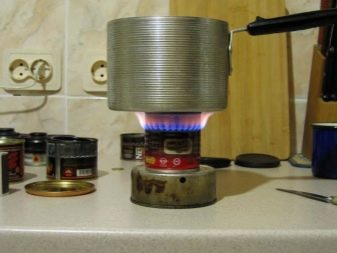
A gas burner can become a universal heater. A gas heater can be used for its intended purpose, and for cooking or heating food. The burner can be placed directly on the cylinder or connected to it with a hose. The recognized benefits of such equipment would be:
- simplicity and reliability;
- compactness and ease of use;
- high efficiency and durability.
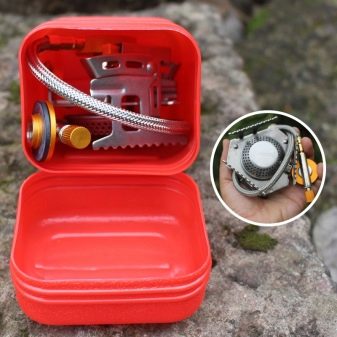

The only natural disadvantage is the need to change cylinders. Often, it is the balloon, due to its size and weight, that causes such equipment to be ignored by hikers.Special mention should be made of a portable gas heat exchanger that does not have an open flame - the so-called infrared heater. This is the safest way to heat a camping tent.
The heating element does not imply not only a flame, but also a flow of hot air.
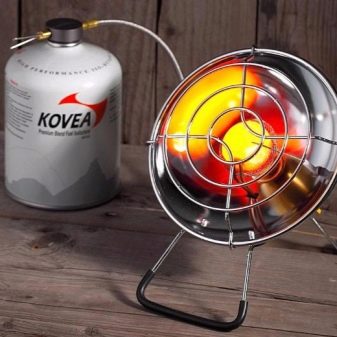
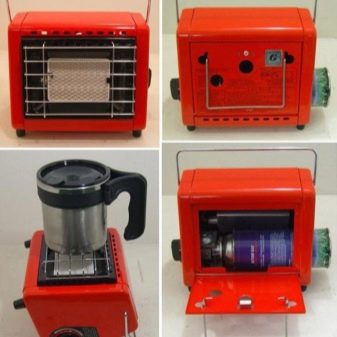
There are 3 types of such devices.
- With a metal heat exchanger in the form of a thin mesh, which heats up when the gas burns. Among all infrared heaters, metal ones are the most uneconomical. One of the advantages can be high efficiency, as well as the ability to use for heating food.
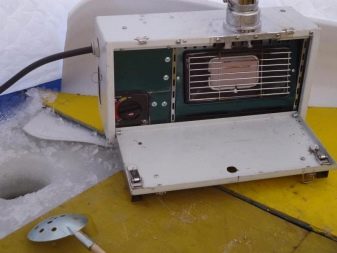
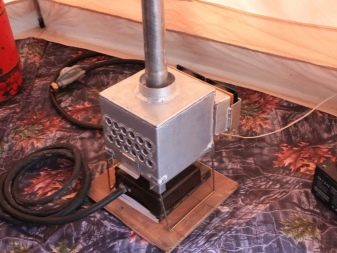
- With ceramic infrared emitter. Such heat exchangers are very effective for heating, but are completely unsuitable for cooking and heating food. Indisputable advantages can be considered a small weight and cost-effectiveness of the device.
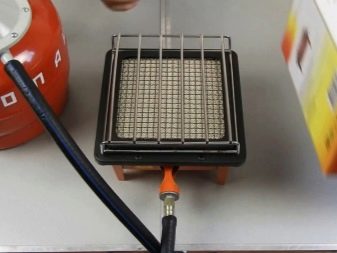

- catalytic. These are the most modern and technically advanced means of heating. The design feature is a special surface made of a special alloy. Combustion does not occur in such a heater, which makes it the safest way to heat a tent in a camping trip. The gas supplied to the surface mentioned above enters into an oxidation reaction, which is why thermal energy is released.
In addition to the absence of a flame, during operation, the catalytic apparatus also does not emit combustion products, however, oxygen is consumed to carry out the reaction, so the tent must be periodically ventilated.You need to be very careful with the catalytic surface, the ingress of moisture or other contaminants is highly undesirable and can damage the device, for this reason it should never be used for heating and cooking food.
In addition to gas models, catalytic gasoline heaters are produced. A common disadvantage of this type is the limited time of their operation. Substances used to support the reaction gradually oxidize and become inactive.
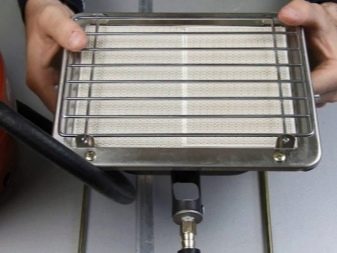
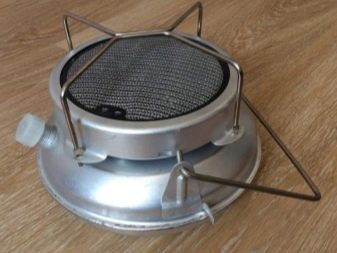
As a heater, the so-called gas afterburner - convector. This compact device complements a gas stove or burner. Due to the complex inner surface, the device heats up even from a weakly burning, narrowly directed flame. Many tourists prefer just such a design, since in this case a camping gas stove becomes a heat source, which you still have to take with you for cooking, and a convector heater no longer requires a large separate place in your backpack.
And, of course, in this case, you do not have to take additional adapters and gas cylinders for the heater with you. The advantages of a convector for hikers are obvious.
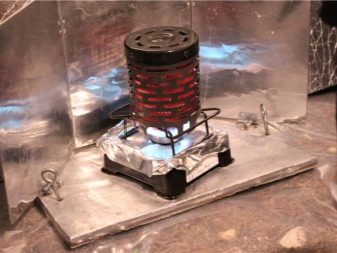
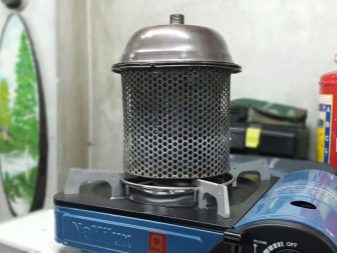
A special line of heating devices are lamp heaters. This gas lantern is significantly different from most of the gas devices described above. Unlike all other heating devices, one of its most important functions is lighting. The light it gives is far from bright, however, sufficient for night lighting of a tent or even a small camp.
One of the side effects of the appliance is the heat generated by it, which will be enough to heat a small room. Of course, in real cold weather, the effect of it will be small. However, in the warm season, such a compact device will help increase the comfort of a portable home.
In a tent illuminated and heated by such a lantern, it is necessary to carry out ventilation, as with any gas heating equipment.
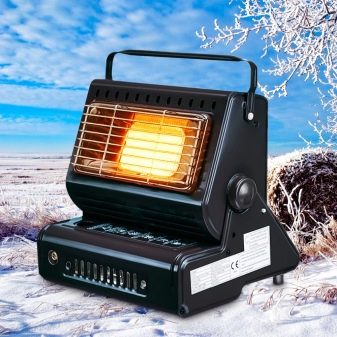

A number of models use automobile gasoline as fuel. Against the background of the growing popularity of gas heating units, gasoline systems are now used less frequently. But still they continue to be produced, albeit in smaller volumes than, for example, a decade ago. A gasoline heater is usually lighter and cheaper than a similar gas heater. However, the safety of gas heaters is higher, and their operation is much easier.


A variation of the previous type can be considered kerosene infrared heaters. In their design, such devices resemble kerosene lamps or stoves. The same fuel tank and wick block in the upper part.
By adjusting the wick, they achieve optimal heating of the mesh structure - the heat exchanger. The device can also be used for heating food. Due to the design features and lightness the device remains a fire hazard, as it is quite easy to tip over. At the same time, a lantern heater is perhaps one of the least expensive options for a portable heating device for a tent.

Suitable for long car expeditions the most technologically advanced heater using diesel fuel. Carrying it on a hike, of course, is unrealistic.Large dimensions and weight (almost 40 kg) plus fuel tanks - all this together makes this type of heating equipment completely unsuitable for an autonomous hike. The diesel unit has the form of an aluminum box, which compactly accommodates: a heater, a battery, a control unit, a silencer, a small tank.
The box is placed outside the tent. For convenience of management there is a remote control. Heat is supplied to the tent through special rubber hoses that can withstand high temperatures.
The production of such equipment has been mastered by handicraft workshops, and industrial models have recently appeared.
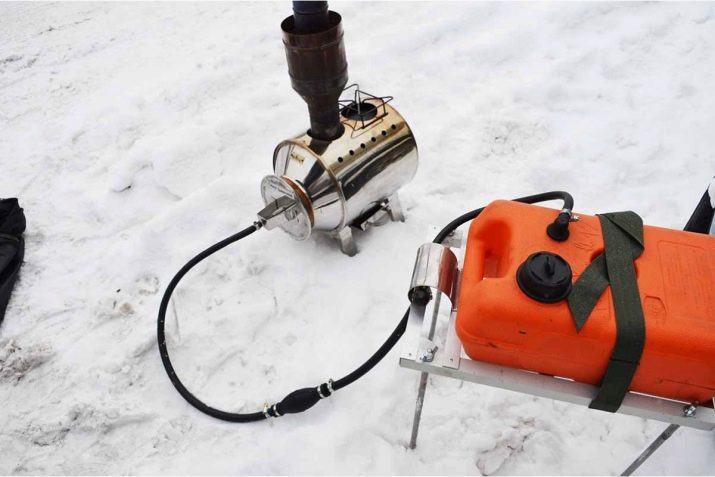
Popular Models
There are many manufacturers of portable tent heaters. There are domestic models and foreign ones. China actively saturates the market with various aggregates. It must be remembered that even the best units for heating tents, combining a number of advantages, are also not without drawbacks. The ideal heater simply does not exist yet.
Each tourist, hunter or fisherman is free to choose a means of heating the tent in accordance with their capabilities and ideas about comfort.

Let's start the review of the most popular models with a copy of Korean production - Electronpower PG7B. Despite the intriguing name, the heater does not require electricity to operate. The heater is equipped with a built-in ceramic plate, which is heated by burning gas. For ignition, you can use a match or a lighter, but the device is equipped with a piezo ignition. There is a power regulator, you can choose the optimal heating and fuel consumption. Electronpower PG7B effectively heats a tourist or fishing tent with low fuel consumption.
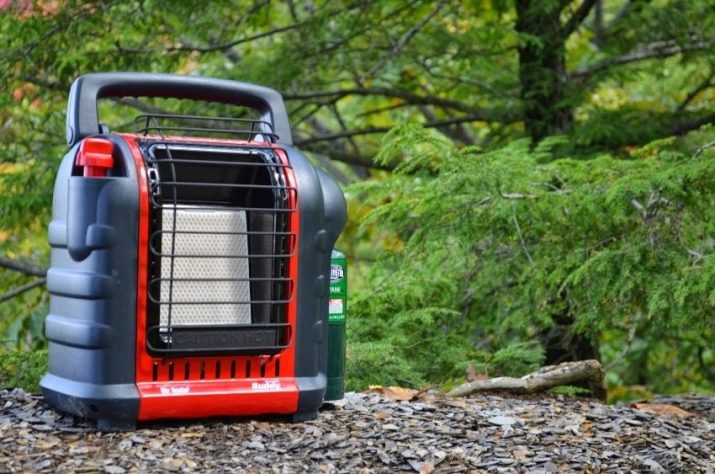
Another popular Korean brand Kovea Fireball KH-0710. It is also an infrared gas heater. The device is equipped with a reflector that allows for directional heating, including turning it into a stove for cooking. Tungsten heating elements make it reliable and durable.
Small dimensions and weight are the absolute advantages of the model.
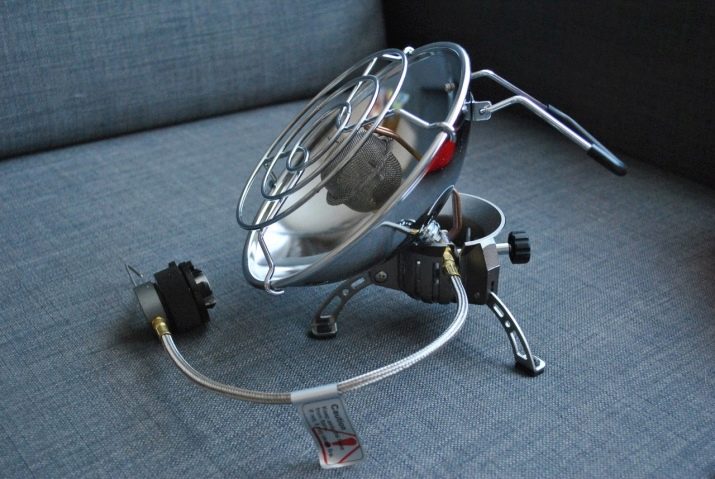
Russian heater "Pathfinder Ion PF-GHP-S01" also a representative of gas reflector heaters. One of the indisputable advantages of the model is its compactness, which does not prevent the device from heating tents at all, including quite large ones; you can also use it to heat a country house. Another advantage of this heater is efficiency. One bottle can be enough for several nights. This is one of the best models for hiking enthusiasts.
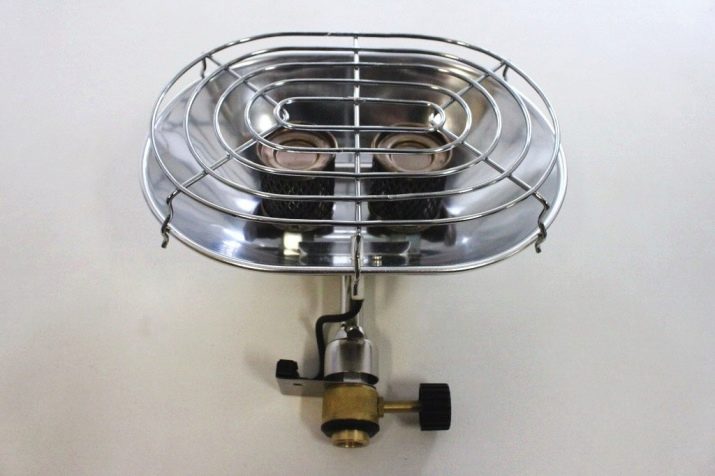
Russian apparatus neoklima also refers to the type of infrared gas heaters. Effectively heating even relatively large rooms, it maintains heat well. Feature is small weight and dimensions of the device. The heater kit includes a variety of adapters, which allows the use of various types of gas cylinders.
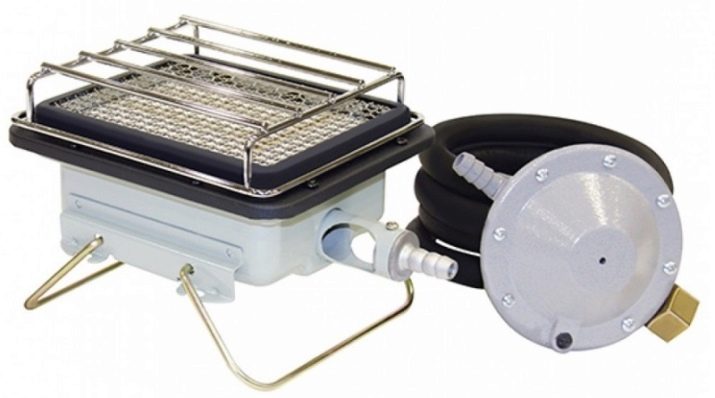
Another Russian brand - "Pathfinder Hearth" has established itself as a great option for winter fishing or hiking. The device easily heats even large tents or wooden houses, it is reliable and relatively economical. True, rather overall dimensions may not play in his favor, for example, when hiking. One of the advantages of this domestic model is the possibility of its use as a stove for cooking and heating food.
The kit with the heater also includes adapters of different diameters, allowing it to be used with any standard cylinders.

The representative of gas heat exchangers for winter fishing is the Kuzma Standard Plus apparatus. The dimensions and design features of the unit do not allow it to be used as a portable camping equipment. But for winter fishing or autoexpedition, this model can be ideal. To operate the heater in normal mode, you will need a battery, as it is equipped with a fan powered by a 12 volt mains voltage.
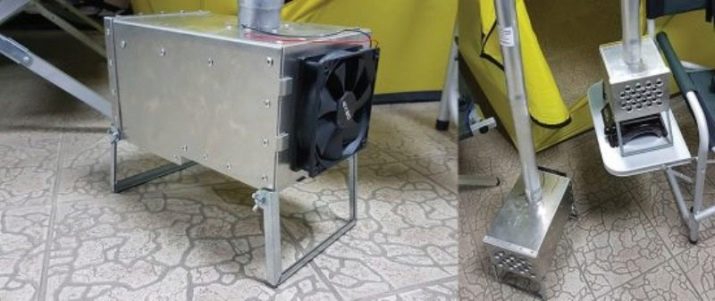
This makes it very effective, dispersing the warm air inside the tent or tent, the heat exchanger is able to quickly warm up the room without leaving cold air in the corners and near the floor. When purchasing such a device, one must be prepared for the fact that you will have to buy additional aluminum pipes necessary for the removal of combustion products outside the tent. They are not included in the Kuzma heat exchanger kit.
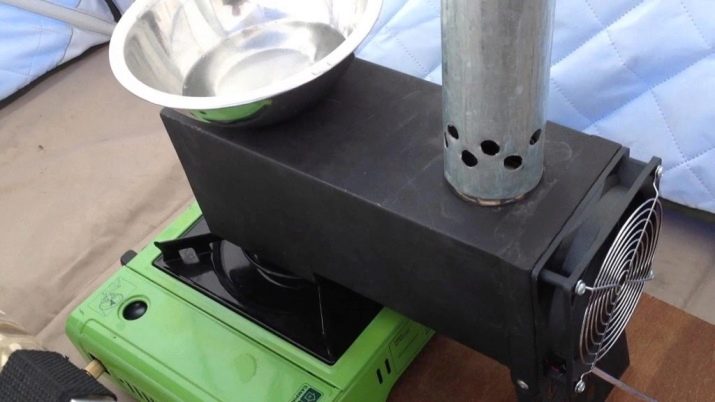
How to choose?
The growing demand for portable camping heaters is pushing manufacturers to saturate the market with a variety of models. On sale there is equipment of any level of complexity and efficiency. The choice of model can be dictated by a number of factors:
- degree of heating;
- fuel availability;
- safety;
- compactness;
- profitability;
- durability;
- price.

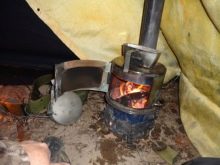
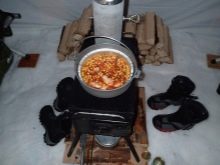
To heat the tent during winter fishing, you can use efficient heater with a gas cylinder. As a rule, there are no problems with the delivery of equipment in this case. Everything you need can be brought by car. Another thing is a winter hiking (skiing) trip, when you have to carry all the equipment and equipment in backpacks.In this case, the choice of heater is largely limited by its size and weight.
The use of the same unit for a tourist tent as for a fishing tent is actually justified, but in reality, less efficient, but lighter models often have to be dispensed with. One of the most important selection criteria is safety. If the device is placed in a tent where people will sleep, you will need to pay attention not only to it, but also to the tent itself.
Not all tents can be used in the cold season, in addition, it is important to ensure fire safety.
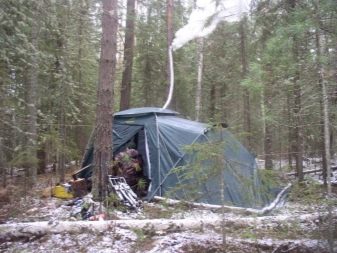

Ventilation of the tent is important. Most heaters in one way or another affect the composition of the air in the room, burning out oxygen and simultaneously releasing carbon dioxide, carbon monoxide and other gases during operation. In the case of large heat exchangers, the problem is solved with a flue pipe, but the operation of compact devices, as a rule, forces you to periodically air the tent.
A fully autonomous hike will require special camping equipment. Buying a portable, for example, gas heater is not difficult. There is also a light gas cylinder for him. But if there are several overnight stays ahead, and even cooking, the main problem will again be the need to allocate enough space in backpacks even for compact gas cylinders.
Heating a tourist tent in winter is an event that requires close attention and serious preparation, no less than preparing a camping set of products.
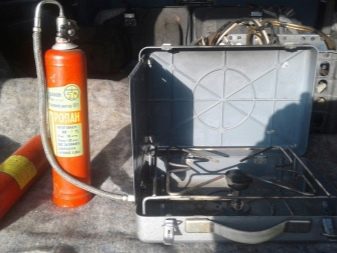
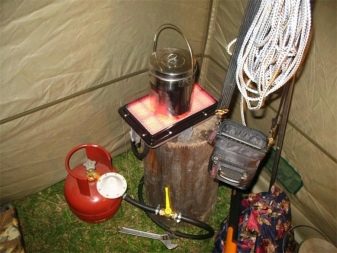
Organization of heating
Heating the tent at night is one of the conditions for a successful trip.This is especially true in winter, but even in the so-called off-season, a comfortable overnight stay in a tent without heating is very rare. Sometimes it is necessary to organize heating only at the beginning of the night in order to warm up the tent. An acceptable temperature will be able to hold out in it for quite a long time, and then again it will be necessary to carry out controlled heating.

This method saves fuel and, thanks to the observation of the device, is quite safe. But, of course, it will not provide a good rest, and in the winter cold it will be absolutely ineffective. In this case, you will have to resort to heaters that can work for a long time in a completely autonomous mode, and then it should be a truly reliable unit.
One of the mandatory conditions for the operation of heating equipment is compliance with basic safety requirements. This is especially important when using open flame heaters. Models that run on burning fuel are very effective, however, when using them, you need to take seriously their location in the confined space of the tent.
It is better to place a heater with liquid fuel away from the entrance so that no one accidentally moves or knocks it over when climbing into or out of the tent. It is also important that during the night it does not get parts of clothing or the edge of the sleeping bag.

If a heat exchanger is placed in the tent, you will have to think about the removal of the gases formed during the combustion of the fuel. This requires a pipe, or rather, a set of pipes, the diameter of which must ensure an exact articulation with the heat exchanger nozzle.
Aluminum corrugated pipes are often used.They will have to be brought out through a special valve, the device of which involves the use of non-combustible materials.
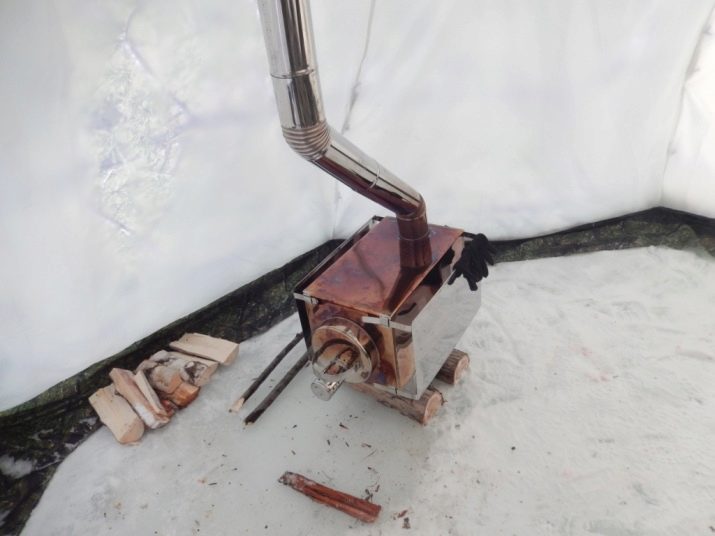
During the operation of the heat exchanger, the pipe can also heat up significantly. It is important that it does not come into contact with the walls of the tent or combustible materials. Not all tents have devices for bringing the heat exchanger tube outside, so when planning winter trips, it is necessary to carefully select not only heating equipment, but also take the selection of a tent seriously.
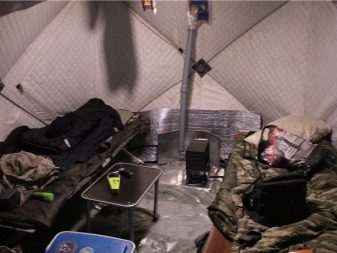

In order to avoid the use of burning fuel and the removal of its combustion products, some craftsmen offer handicraft developments of battery-powered heating devices that do not require the use of any fuel. However, without recharging, such elements quickly lose their effectiveness. If you take a generator with you that will maintain a voltage of, for example, 12 volts, a reasonable question arises, why not do it easier and just take a heater that uses the same fuel.
As you can see, such, at first glance, an advanced method of heating only increases the labor costs for its organization.
How to choose a heat exchanger for heating a winter tent, see the following video.






















